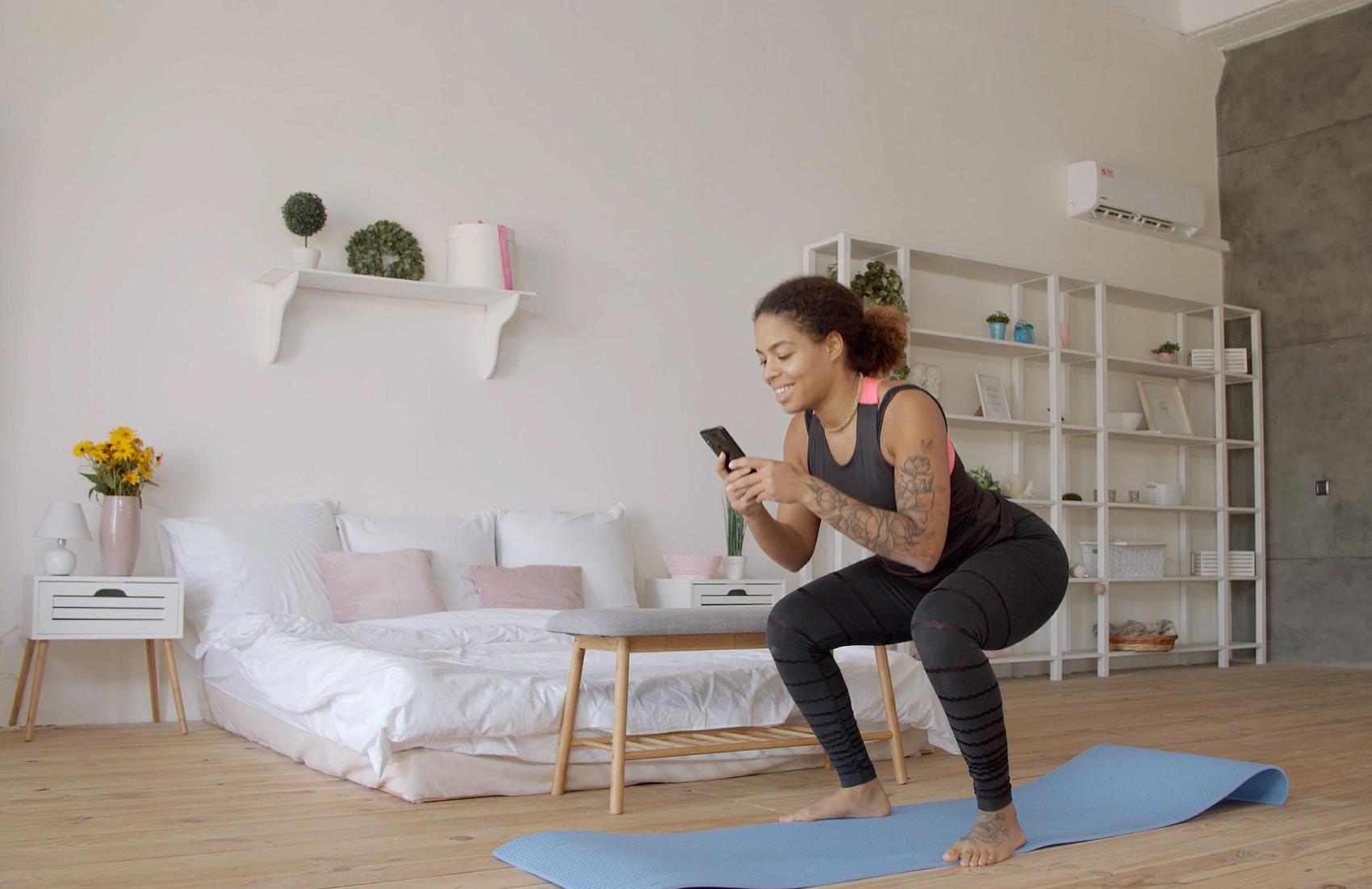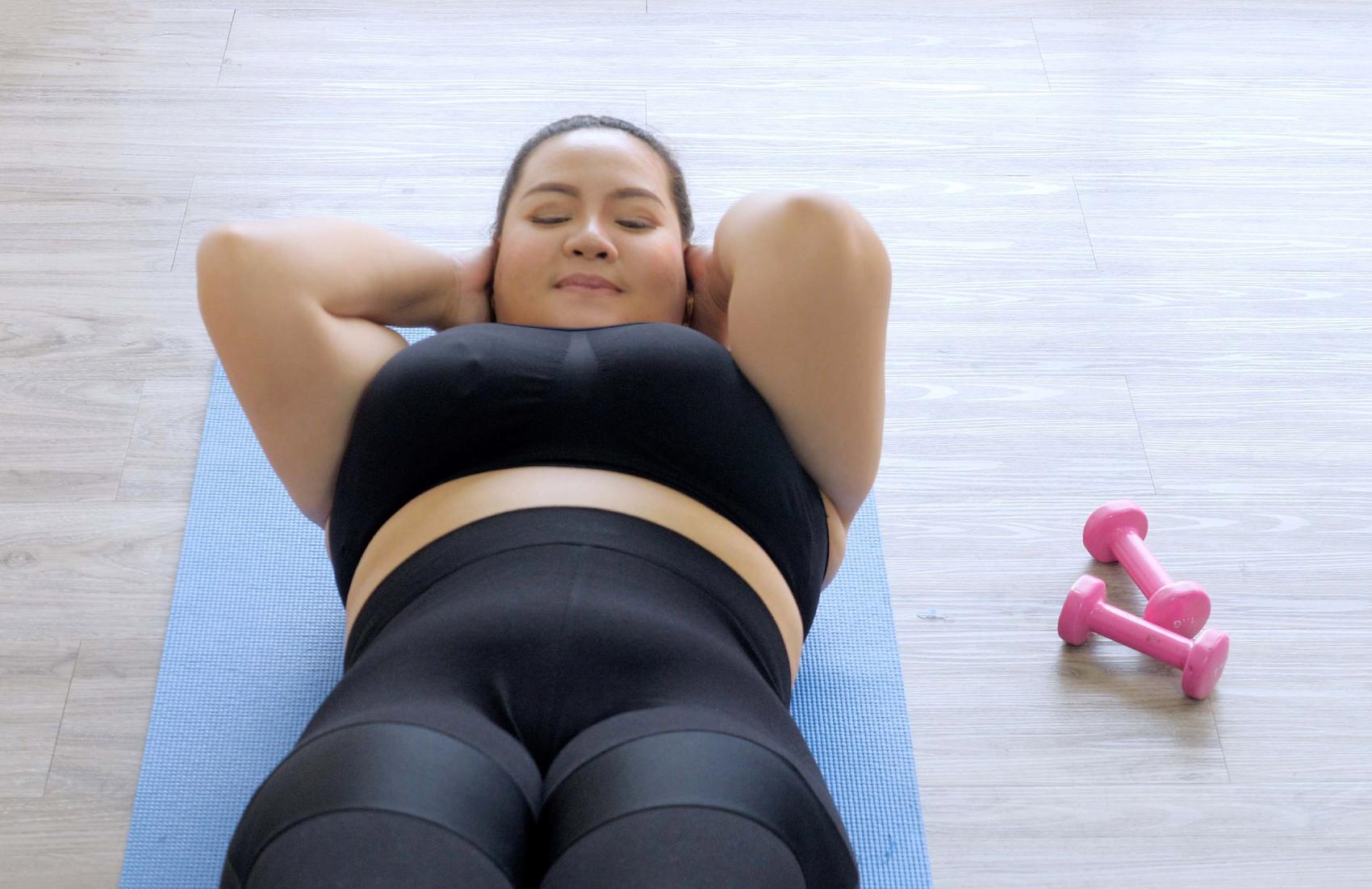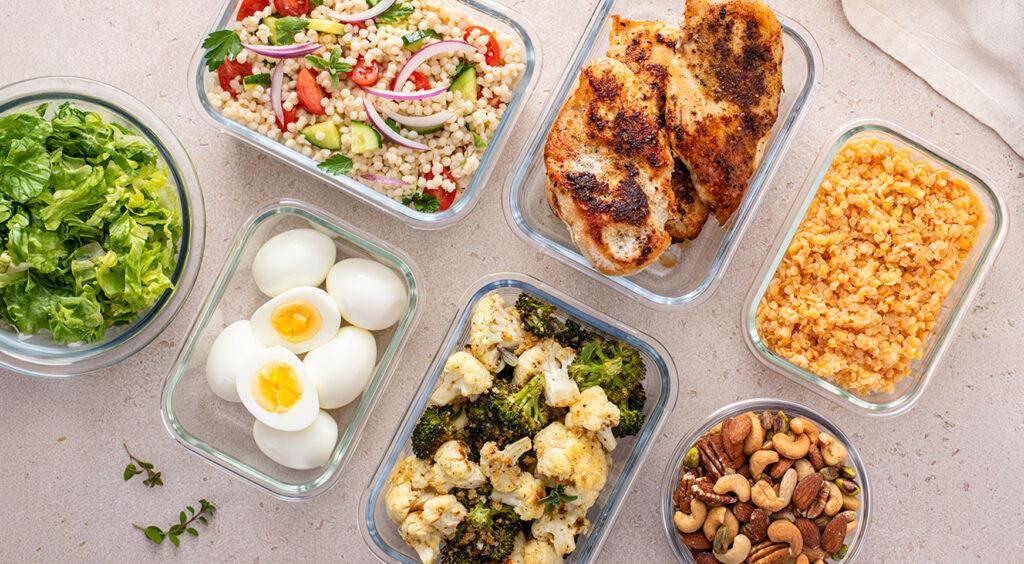How to get motivated to start exercising at home
by Carolyn Ali

App-based workouts can help combat depression and boost mental health
We all know that exercise could help make us feel better. But becoming more active can seem overwhelming when the bar appears so high – the Canadian physical activity guidelines recommend 150 minutes of exercise per week.
That’s a big hurdle to jump if you’re starting from little to no exercise at all.
The important thing is that you just start moving, says Dr. Eli Puterman. “It doesn’t have to be all or nothing,” he says. “Going from zero minutes to 10 minutes a week is better than staying at zero.”
As an associate professor at UBC’s School of Kinesiology and the Canada Research Chair in Physical Activity and Health, Dr. Puterman knows that exercise can help combat depression. He also understands that initiating physical activity can be a challenge for those diagnosed with depression. So he wants people to reframe what constitutes a “workout” to help them overcome the psychological barrier to getting moving.
“When people think about exercise, they think they have to do an intense workout at the gym,” he says. “I like to think of exercise as simply moving your body.”
Dr. Puterman recommends trying at-home or app-based workouts because they are accessible, low-cost and can be done with little space and no equipment. In a recent study, his team found that at-home exercise reduced depression levels significantly during COVID-19 lockdowns.
Dr. Teresa Liu-Ambrose, professor and Canada Research Chair at UBC’s Department of Physical Therapy, also says any exercise is better than none when it comes to your mental health.
“The impact of exercise on your brain is measurable,” says Dr. Liu-Ambrose, who studies the role of physical activity in preventing cognitive decline through UBC’s Djavad Mowafaghian Centre for Brain Health. “There is good pharmaceutical therapy for depression, but exercise is highly recommended as a strategy in parallel to maintain mental health.”
So how can you start moving more? Here are seven helpful tips.

1. Set manageable goals
“The big challenge is getting past that inertia phase,” says Dr. Liu-Ambrose. “Adopting physical activity behaviour is challenging for most people, and adding on a mood disorder could make things even harder.”
The key is to break up exercise goals into manageable chunks. Choose something small and specific that you can realistically carry out to avoid feeling like a failure. “It could be ‘Today I’m going to go on the Internet and find an app that works for me’,” explains Dr. Liu-Ambrose. “And tomorrow you could choose an exercise in the app and try it out.”
2. Start small
Accomplishing small goals can help boost your mental health. Dr. Puterman says exercise apps can help because you can customize your workout to what you feel capable of. “You can go at your own pace and you’re not competing with anyone else in a class,” he says.
Participants in his study used the suite of Down Dog apps, which includes both yoga and high-intensity interval training (HIIT) exercises. (Down Dog did not sponsor the study and Dr. Puterman has no conflict of interest.) The apps let you select the number of minutes you want to work out, adjust the exercise intensity, choose the duration of each exercise (e.g. 30 seconds) and the break time between exercises. You can also specify whether or not you want to use equipment like weights or bands.
Regardless of the app you use, Dr. Puterman advises that you start off slowly with a workout of just five minutes. “Select the length of each exercise as 20 seconds, followed by an equal length of break between each exercise,” he advises. “Take time to watch how each exercise is done first so you can do it correctly to avoid injury or stress.”
Dr. Puterman recommends the free Scientific 7-Minute Workout created by the New York Times. “It’s a really nice place to start for people who haven’t worked out for a long time, or ever.”
3. Do what works for you
The researchers don’t endorse any particular app and Dr. Puterman notes that there are plenty to choose from, including Adidas Training by Runtastic, Fitness Buddy and the Nike Training Club. The Peloton app offers on-demand cardio, strength, and other workouts (for which you don’t need an exercise bike or treadmill). UBC Recreation offers recorded virtual fitness classes and movement breaks. Some television and Internet service providers also offer on-demand fitness classes.
Dr. Liu-Ambrose works with older adults and encourages them to do strength training using soup cans or empty milk jugs as weights. “We tell people to grab a backpack, load it up and do lunges or squats,” she says. “If you’ve never done weight training before, start slowly and see how your body responds.”
People living with a disability can find support to start or maintain an at-home physical activity program through Get In Motion. The free, telephone-based service is run by the Canadian Disability Participation Project, led by UBC Okanagan’s Dr. Kathleen Martin Ginis and researchers from Queen’s University. It provides coaching for adults with a physical disability, such as spinal cord injury, multiple sclerosis, stroke, fibromyalgia, arthritis and more.

4. Get outside
“Especially during the winter, I really advocate a walk outdoors,” says Dr. Liu-Ambrose. “Light is so important for how we feel, sleep and think.” She suggests going for a short walk once or twice a day, perhaps after breakfast and lunch, to help set your circadian rhythms.
Dr. Puterman notes that many app-based exercises can be done outside under a shelter at a community space if you don’t have room indoors. He also suggests apps such as Map My Run or ASICS Runkeeper to provide structure and keep you motivated.

5. Draw on social support
You don’t need to be physically together to benefit from exercise with family and friends. For example, Dr. Puterman sets a time to talk on the phone with his sister as they both walk their dogs in different cities.
Exercising socially can function as a “mini support group” says Dr. Liu-Ambrose. “If exercise is done in a group setting or a socially engaging setting, that in itself promotes well-being,” she explains. “There’s value in the physical exercise itself. But anything that can add the social aspect magnifies those effects.”
6. Track your progress
Apps can be very useful motivational tools because they help track your progress. “Once you get into a pattern, you don’t want to miss that next session because you’re doing pretty well, and you know that because you’ve been tracking your workouts,” explains Dr. Liu-Ambrose.
Apps such as Strava allow you to share progress through a social media community, if you choose.
Building in incentives and rewards for yourself can help. “It could be that if you do three sessions a week, you place $10 in a special bank account for a future purchase,” says Dr. Puterman.

7. Reinforce that good feeling
“One of the greatest tricks of making a new habit is reminding yourself at the end of the workout how good you feel,” says Dr. Puterman. “Make it a conscious thought: ‘I did this. I feel good I did this for myself.’”
Dr. Liu-Ambrose uses this tactic herself. “I really focus on how good I feel after exercising and put that in my memory bank. I use it as a driver for the next session: I want to feel that way again.”
Learn how to work exercise “snacks” into your day
Carolyn Ali is a writer for UBC Brand and Marketing. This article was published on January 11 2022. Feel free to republish the text of this article, but please follow our guidelines for attribution and seek any necessary permissions before doing so. Please note that images are not included in this blanket licence.


